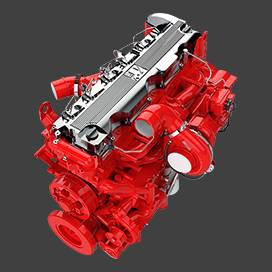Oct . 09, 2024 15:28 Back to list
how to remove brake drums
How to Remove Brake Drums A Step-by-Step Guide
Removing brake drums may seem daunting for those unfamiliar with automotive maintenance, but with the right tools and techniques, it can be accomplished with relative ease. This guide will walk you through the steps needed to safely remove brake drums from your vehicle, ensuring that you can address brake issues or replace components as necessary.
Tools and Materials You'll Need
Before you start, gather the following tools and materials
1. Jack and jack stands 2. Lug wrench 3. Brake drum puller (optional but helpful) 4. Screwdrivers (flat and Phillips) 5. Pliers 6. Clean rags 7. Brake cleaner 8. Gloves and safety goggles
Step 1 Prepare Your Vehicle
1. Safety First Park your vehicle on a level surface and engage the parking brake. Make sure to wear safety goggles and gloves to protect yourself during the process.
2. Loosen Lug Nuts Using a lug wrench, slightly loosen but do not fully remove the lug nuts of the wheel corresponding to the brake drum you are about to remove. This will make it easier to remove the wheel once the vehicle is lifted.
3. Lift the Vehicle Position a jack under the vehicle's designated lift points. Carefully raise the vehicle until it is high enough for you to work underneath safely. Once at the desired height, securely place jack stands under the vehicle for added safety.
Step 2 Remove the Wheel
1. Remove Lug Nuts Now that the vehicle is securely elevated, remove the loosened lug nuts completely. Keep them safe, as you will need them later.
2. Take Off the Wheel Gently pull the wheel off the hub and set it aside. This will expose the brake drum.
Step 3 Inspect the Brake Drum
1. Check for Damage Before proceeding, inspect the brake drum and surrounding components for any visible damage or wear. If you notice issues, it might be worth addressing them before attempting to remove the drum.
how to remove brake drums

Step 4 Remove the Brake Drum
1. Check for Retaining Screws Some brake drums have retaining screws that keep the drum in place. If present, use a screwdriver to remove these screws.
2. Try to Remove the Drum Gently pull the brake drum outward. If it doesn’t budge, it may be due to rust or debris. In this case, a few taps with a rubber mallet can help loosen it.
3. Use a Brake Drum Puller If the drum still won’t come off, using a brake drum puller is a prudent choice. Attach the puller to the drum according to the instructions provided with the tool, and tighten it slowly until the drum pops off.
Step 5 Clean and Inspect
1. Clean the Drum and Components Once removed, use brake cleaner and a clean rag to wipe down the drum and surrounding components. Remove any dust or debris, as this helps to maintain your braking system's effectiveness.
2. Inspect Brake Shoes and Hardware Examine the brake shoes for wear. If they appear worn down, consider replacing them. Also, check springs and retaining clips for any signs of damage.
Step 6 Reinstallation
1. Reinstall the Brake Drum If you're replacing the drum, position the new drum over the brake components, ensuring it fits securely.
2. Reattach the Wheel Place the wheel back on the hub, and carefully thread the lug nuts by hand to avoid cross-threading.
3. Lower the Vehicle Once everything is in place, lower the vehicle back to the ground and torque the lug nuts to the manufacturer’s specifications using a torque wrench.
Conclusion
Removing brake drums is a crucial skill for DIY automobile enthusiasts. With patience and the right tools, you can troubleshoot and maintain your vehicle’s brake system effectively. Always remember safety first and don’t hesitate to consult a professional mechanic if you feel uncertain at any step of the process. Happy wrenching!
-
Scania Brake Drums: OEM Quality for Optimal Safety & Durability
NewsAug.16,2025
-
R.V.I: Advanced Remote Visual Inspection for Precision
NewsAug.15,2025
-
Discover HYUNDA: Innovative Vehicles, Equipment & Solutions
NewsAug.14,2025
-
R.V.I: Unlock Advanced Insights & Real-time Performance
NewsAug.13,2025
-
Kamaz Brake Drum: Durable & Reliable for Heavy Duty Trucks
NewsAug.12,2025
-
Heavy Duty Iveco Brake Drum - Premium Quality & Safety
NewsAug.11,2025
